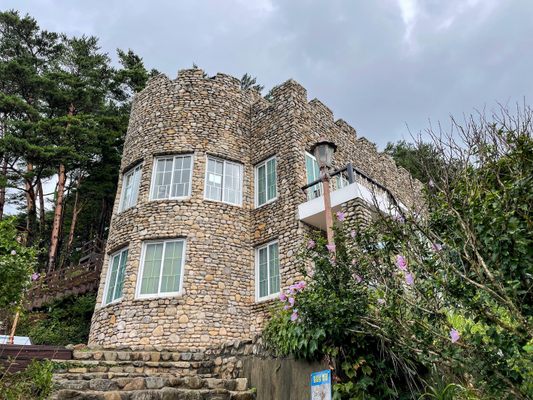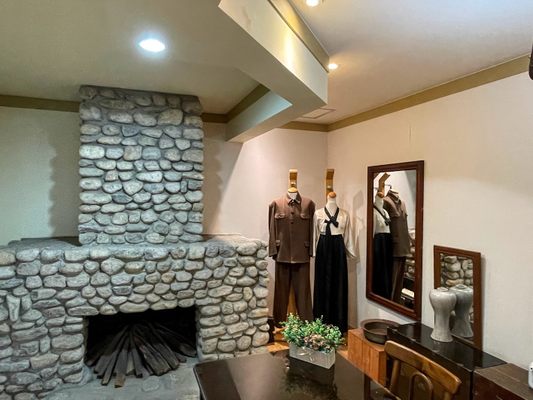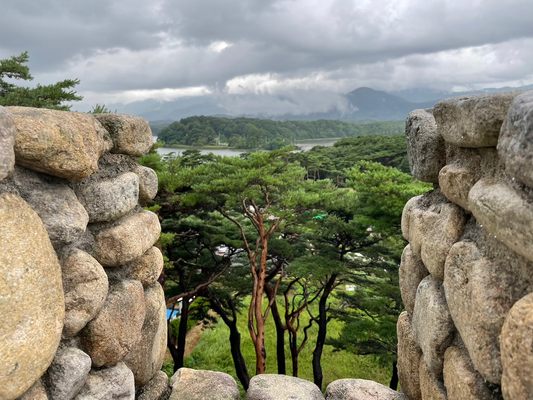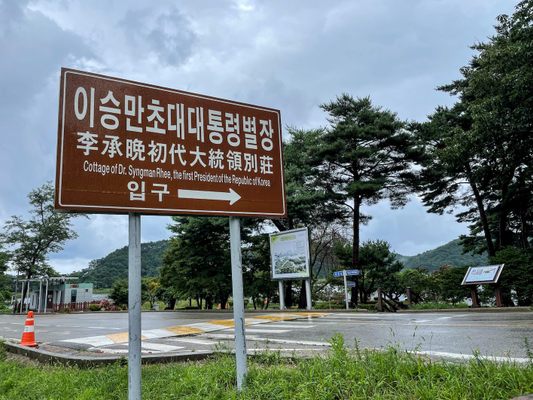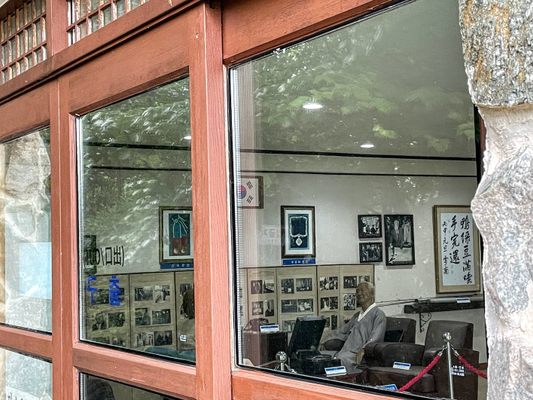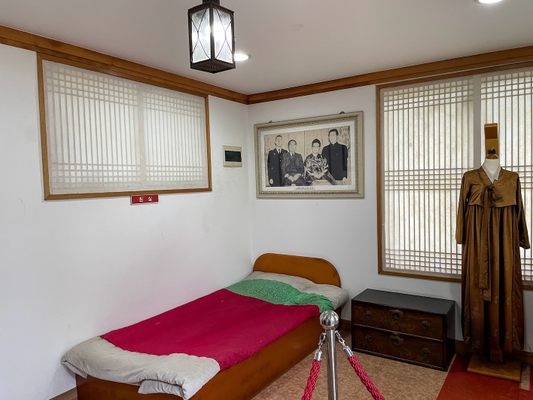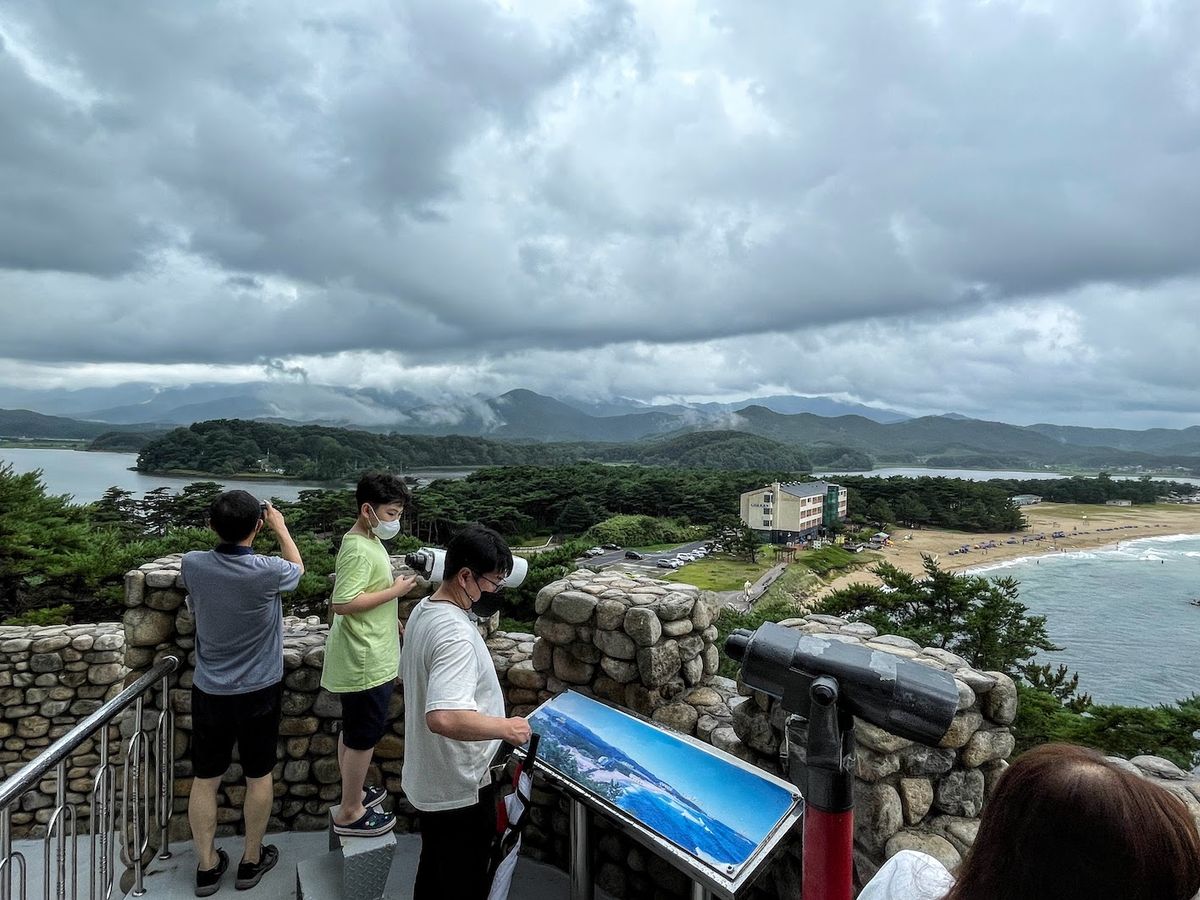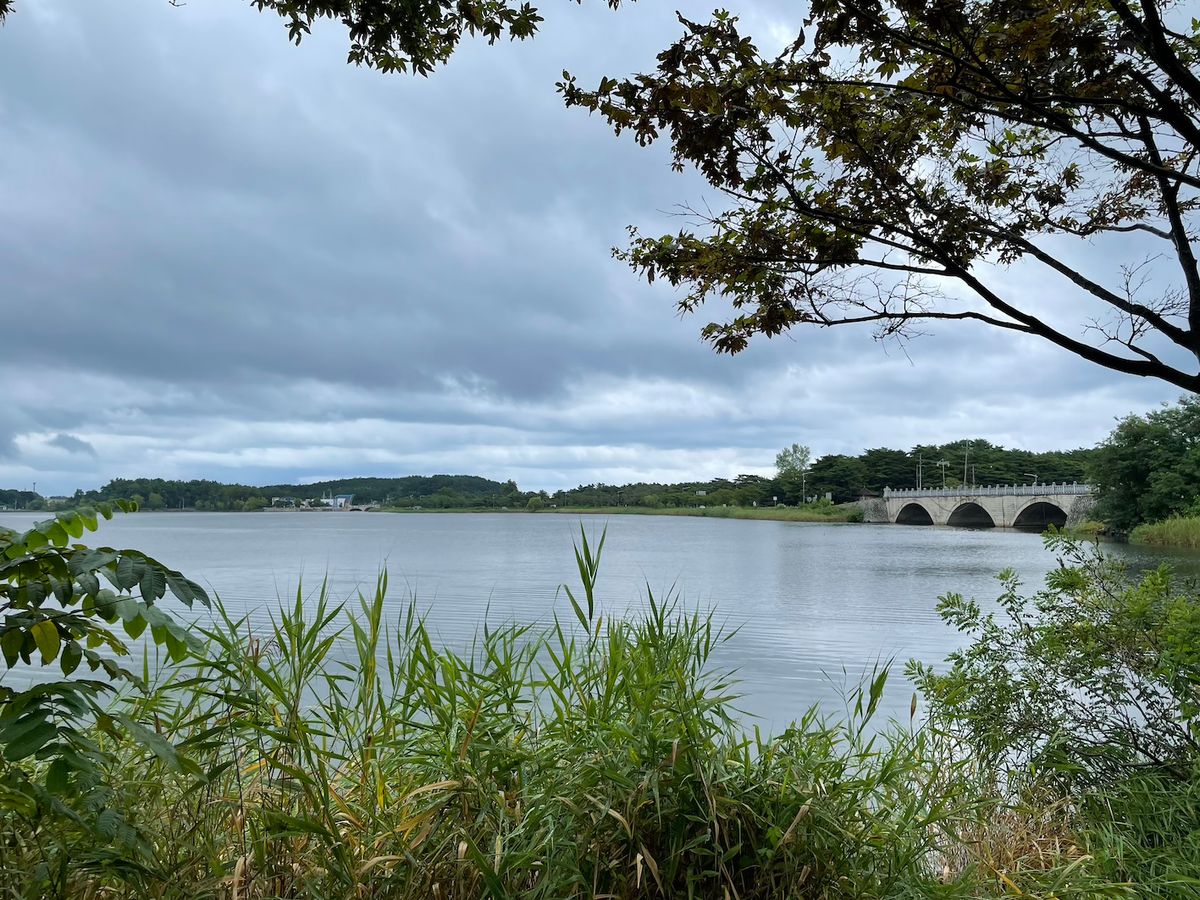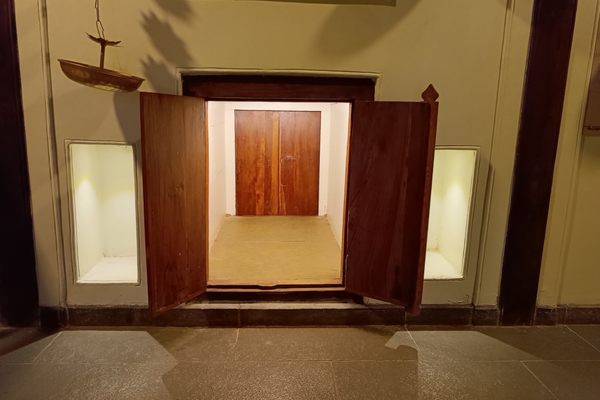About
In Goseong, a seaside town only seven miles south of the 38th parallel that divides the Korean peninsula, stand three houses, where the triumvirate of postwar Korea—Kim Il-sung, Syngman Rhee, and Lee Ki-poong—once vacationed in the summer.
In a still-unified but Japanese-occupied Korea, Goseong was a resort town for missionaries. In 1938, one missionary named Sherwood Hall commissioned a house on a bluff overlooking the shores of Hwajinpo Beach to a German architect who had fled Hitler’s reign. The result was a three-story villa, crenelated like a medieval castle and perched amid a grove of pines. It was briefly used as a house of worship and as Hall’s vacation home until he and his family were deported in 1940 by the Japanese government on “espionage” charges, as were many other foreigners in Korea.
Then came the division. In 1945, when two mid-ranking American officials split the country at the 38th parallel after 30 minutes of deliberation, Goseong first fell inside North Korean territory. Eight years later, this slapdash endeavor was replaced by a slightly more carefully drawn cease-fire line in 1953, which placed Goseong in the southern half.
In that brief period during which Goseong belonged to the North, North Korea’s ruling elites summered in the left-behind properties, and Hall’s mini castle caught the eye of the state’s founder Kim Il-sung, who made it his summer retreat. Unlike its historic-looking exterior, the interior is unpreserved. The walls have been painted bright blue and yellow and are covered with posters presenting bits of trivia, like the linguistic differences between North and South Korea.
There’s a small corner on the second floor recreating how the house might have been furnished, with dress forms clothed in period attire. The third floor is an observation deck, where visitors can breathe in a view of the coastline to the east, where the surf laps the shore, and a view of mount Kumkang’s ranges to the north. A photo of the Kim family from 1948, including a young Kim Jong-il visited by a Soviet general, hangs by the stairway that leads to the villa’s front entrance.
Over the years, the villa has received threats from anti-communist groups. The whole town’s popularity ebbs and flows with the fluctuating hostility between the two nations. When North-South tensions rise, tourists thin out, and street vendors that throng the beach ruefully pack up.
A minute-drive away, across an arch bridge, is Syngman Rhee’s summer cottage: a one-story, 960-square-foot stone house on a promontory overlooking the country’s largest lagoon, Hwajinpo Lake. Syngman Rhee, whose Ivy-League education, fluent English, and anti-Soviet stance won him the favor of US officials, was South Korea’s first president, who ruled for 12 years.
His cottage was later demolished but reconstructed in 1999. Wax figures of Rhee and First Lady Francesca Donner sit facing each other in the living room. There is a study and a bedroom, all adorned with items donated by Rhee’s family members. The stairway to its rear further ascends to a rather hagiographic memorial of the strongman president. Built in 2007, the memorial is a reverential display of his diplomas and books, omitting the violent suppression under his iron-fisted rule and disgraced departure from office due to mass protests following Rhee’s electoral fraud.
And the man who engineered the 1960 elections, his running mate Lee Ki-poong, also set up his summer residence in Hwajinpo, a short walk away from Kim Il-sung’s villa. Lee’s red-roofed stone house is underwhelming, like the other two houses. Not one of them is monumental or opulent, as one might expect of a presidential retreat. In fact, visitors may walk away disappointed, even depressed, by the utter lack of splendor.
But history buffs will find the houses deceiving. The modest proportions and rickety furnishings belie the larger-than-life personas of their occupants and their relentless pursuit of power.
Related Tags
Community Contributors
Added By
Published
March 21, 2022
